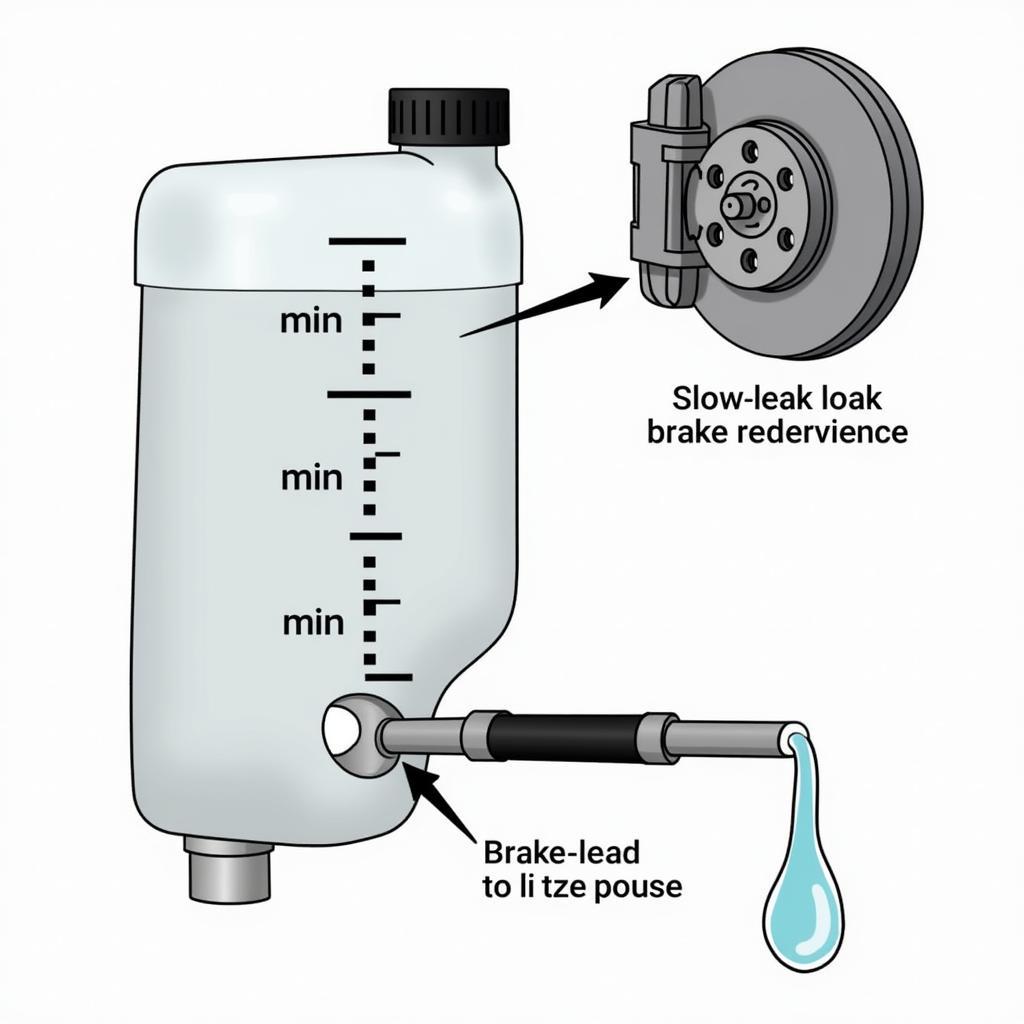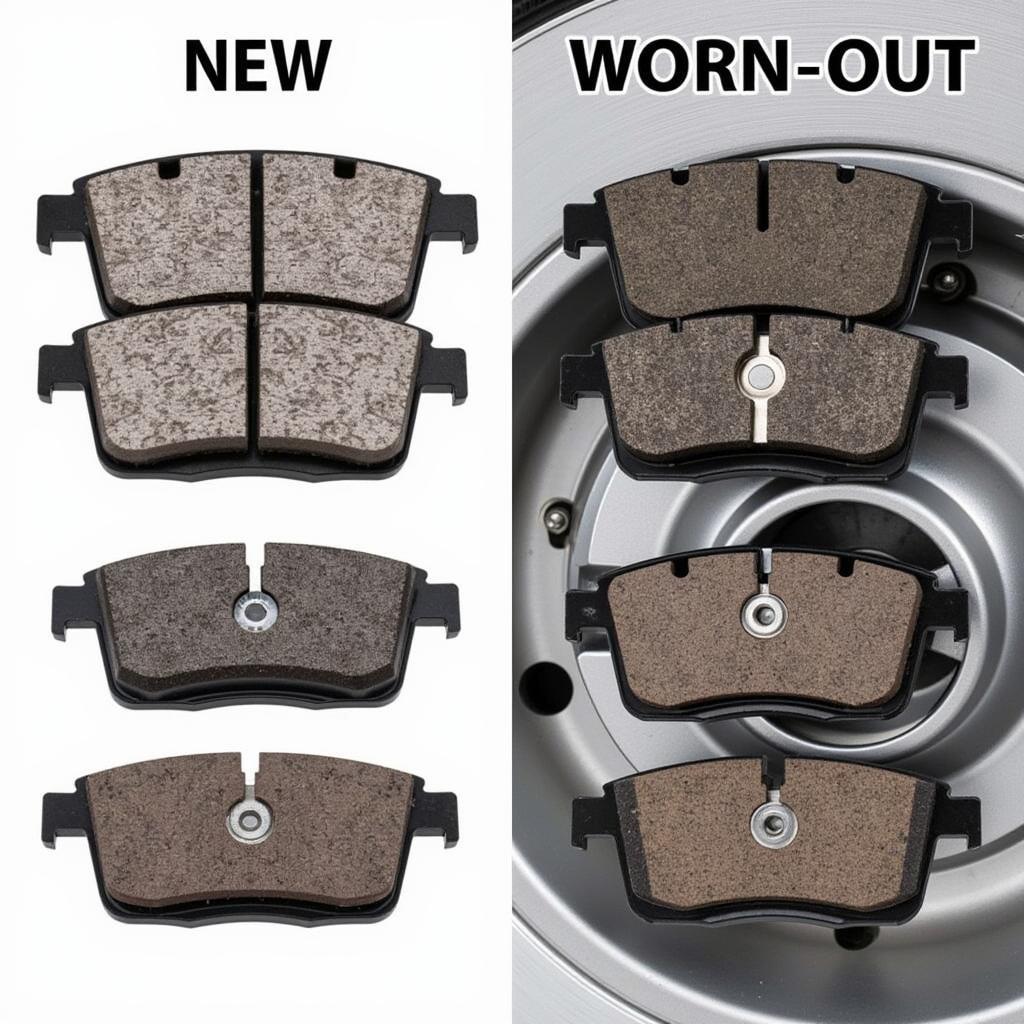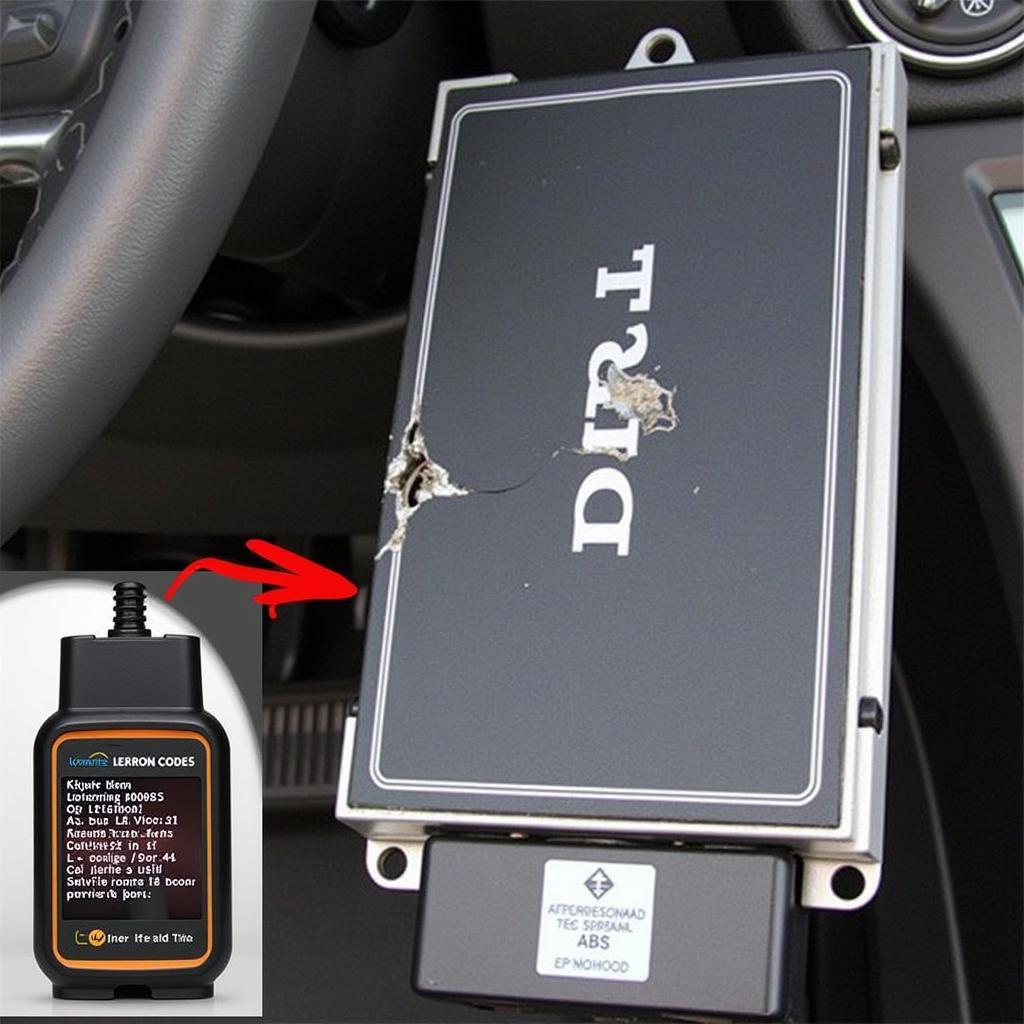Seeing all your brake warning lights illuminated on your dashboard can be a nerve-wracking experience. It’s a glaring signal that something isn’t right with your car’s braking system, demanding immediate attention. While it might seem like the end of the world, don’t panic! This comprehensive guide will walk you through the possible causes, solutions, and preventive measures to address this issue.
Understanding Your Car’s Brake Warning System
Your vehicle has a sophisticated system of sensors and lights designed to alert you to potential brake problems. The most common warning lights related to your brakes include:
- Brake System Warning Light: This light typically looks like an exclamation point inside a circle and surrounded by parentheses. It indicates a general issue with your braking system.
- Anti-lock Braking System (ABS) Light: This light, often displaying “ABS” or a similar symbol, indicates a problem with the anti-lock braking system.
- Electronic Stability Control (ESC) Light: Usually displaying a car with skid marks or the letters “ESC,” this light indicates an issue with your vehicle’s stability control system, which is closely tied to your brakes.
If any of these lights illuminate, it’s crucial to investigate the issue promptly.
Why Are All My Brake Warning Lights On?
Several reasons can cause all your brake warning lights to turn on simultaneously. Here are some of the most common culprits:
1. Low Brake Fluid Level
What it means: Brake fluid is the lifeblood of your car’s braking system. If the fluid level drops too low, it can disrupt the hydraulic pressure needed for your brakes to function correctly.
What to do: Check your brake fluid reservoir. If the fluid level is low, carefully add the recommended brake fluid for your vehicle. However, simply topping off the fluid isn’t a permanent fix; it’s crucial to identify and address the underlying cause of the leak.
 Low Brake Fluid Level
Low Brake Fluid Level
2. Worn-Out Brake Pads
What it means: Brake pads are designed to wear down over time. If they become excessively worn, it can trigger the warning lights.
What to do: Have your brake pads inspected by a mechanic. If they are worn beyond the recommended limit, they will need to be replaced.
 Worn Out Brake Pads
Worn Out Brake Pads
3. Faulty Brake Sensors
What it means: Your car’s brake system relies on sensors to monitor various components, such as brake fluid level and pad wear. A malfunctioning sensor can send incorrect signals, causing the warning lights to illuminate.
What to do: A mechanic can diagnose faulty brake sensors using a diagnostic tool and replace them if necessary.
4. ABS System Malfunction
What it means: A problem within the ABS system, such as a faulty pump, sensor, or control module, can trigger all the brake warning lights.
What to do: Diagnosing ABS issues often requires specialized equipment. It’s best to take your vehicle to a qualified mechanic for inspection and repair.
 ABS System Malfunction
ABS System Malfunction
5. Electrical Issues
What it means: Wiring problems, a blown fuse, or a failing battery can disrupt the electrical signals to your brake warning system, causing the lights to malfunction.
What to do: Inspect the related fuses and wiring for any visible damage. If you can’t find the issue, consult a mechanic to diagnose and resolve the electrical problem.
What to Do When Your Brake Warning Lights Turn On
- Don’t Panic: Stay calm and pull over to a safe location as soon as possible.
- Check Your Brake Fluid: Carefully inspect the brake fluid level. If it’s low, add the recommended fluid but remember to seek professional help to identify the source of the leak.
- Assess Your Brakes: Gently test your brakes while parked or at very low speeds. If you notice any unusual noises, vibrations, or if the brake pedal feels spongy, avoid driving and seek immediate assistance.
- Seek Professional Help: If you’re unsure about the cause or severity of the issue, it’s always best to consult a qualified mechanic for a comprehensive diagnosis and repair.
Preventive Measures
- Regular Brake Inspections: Adhere to your vehicle’s recommended maintenance schedule for brake inspections and fluid flushes.
- Quality Brake Pads: Invest in high-quality brake pads to ensure optimal performance and longevity.
- Address Warning Lights Promptly: Never ignore any warning lights related to your brakes.
Conclusion
Seeing all your brake warning lights on can be alarming, but understanding the potential causes and taking prompt action is crucial. Regular maintenance, timely inspections, and addressing warning signs early can go a long way in preventing major brake problems and ensuring your safety on the road.
FAQs
Q: Can I drive my car with the brake warning lights on?
A: While it might seem possible to drive short distances with some brake warning lights illuminated, it’s highly discouraged. Driving with a compromised braking system puts you and others at risk.
Q: How much does it cost to fix brake warning light issues?
A: The cost of repair varies widely depending on the underlying cause. A simple brake fluid top-up might cost a few dollars, while a complete brake system overhaul could run into hundreds or even thousands.
Q: How often should I check my brake fluid?
A: It’s good practice to check your brake fluid level at least once a month and before long trips.
Q: Do I need a mechanic to diagnose brake warning light problems?
A: While some issues might be simple to identify and address, it’s generally recommended to seek professional help for accurate diagnosis and repair, especially if you’re dealing with ABS or electronic stability control issues.
Q: Can bad weather cause brake warning lights to come on?
A: While extremely cold temperatures can sometimes cause temporary sensor glitches, it’s unlikely to trigger all your brake warning lights. It’s always best to err on the side of caution and have your system checked.
